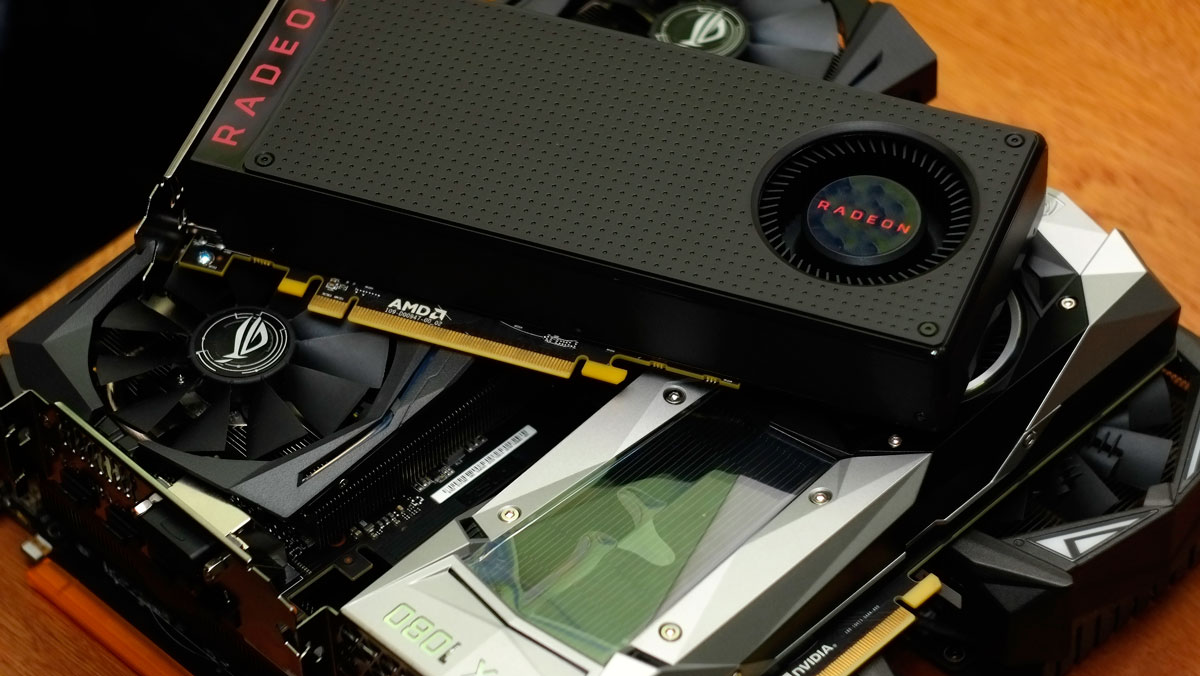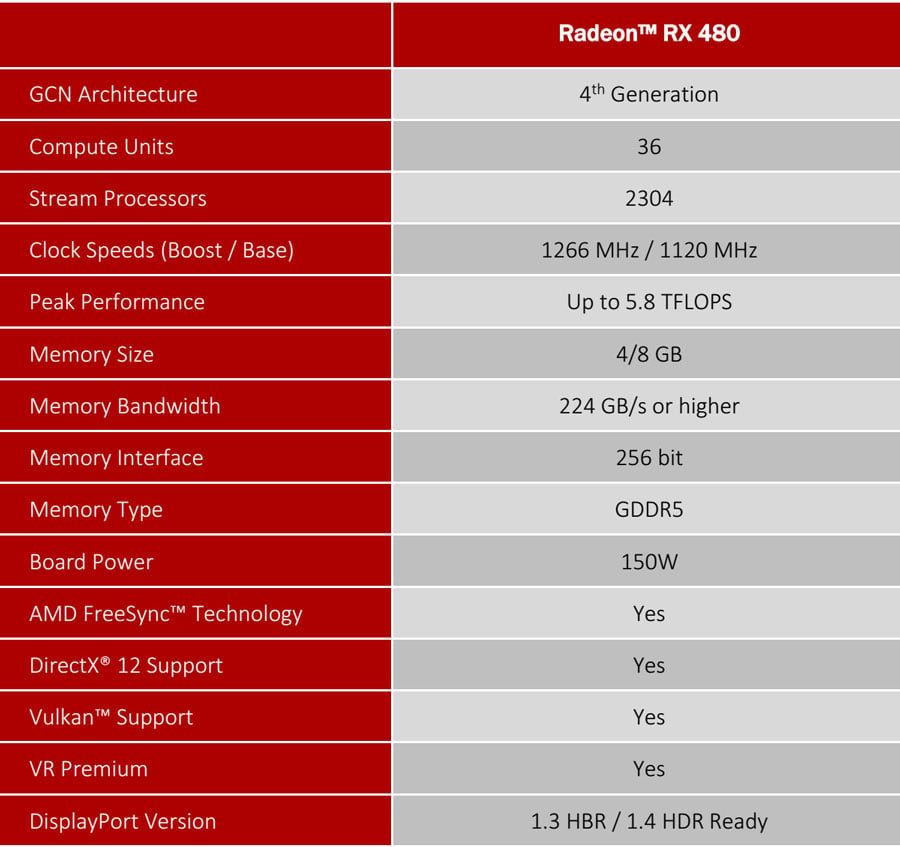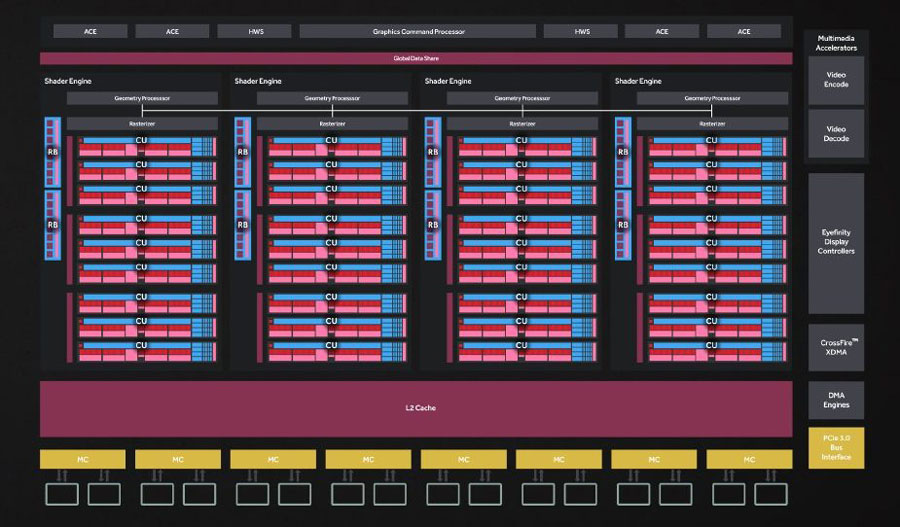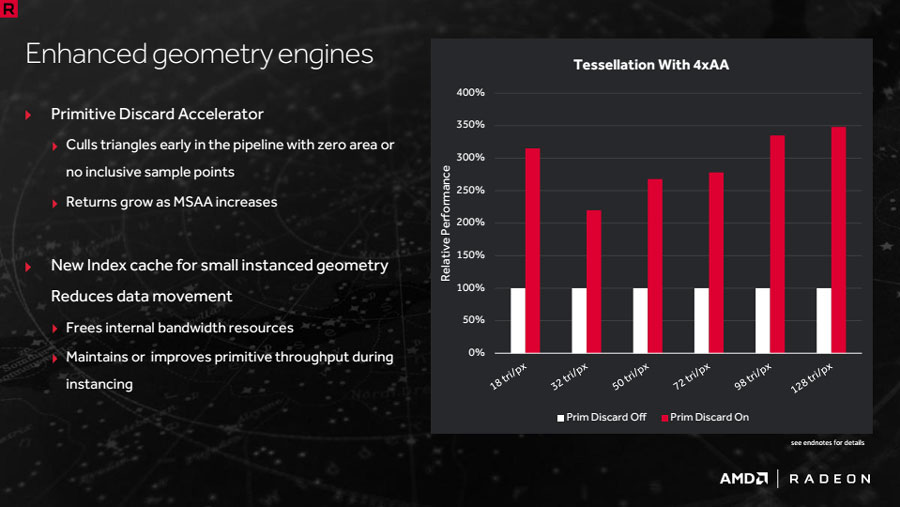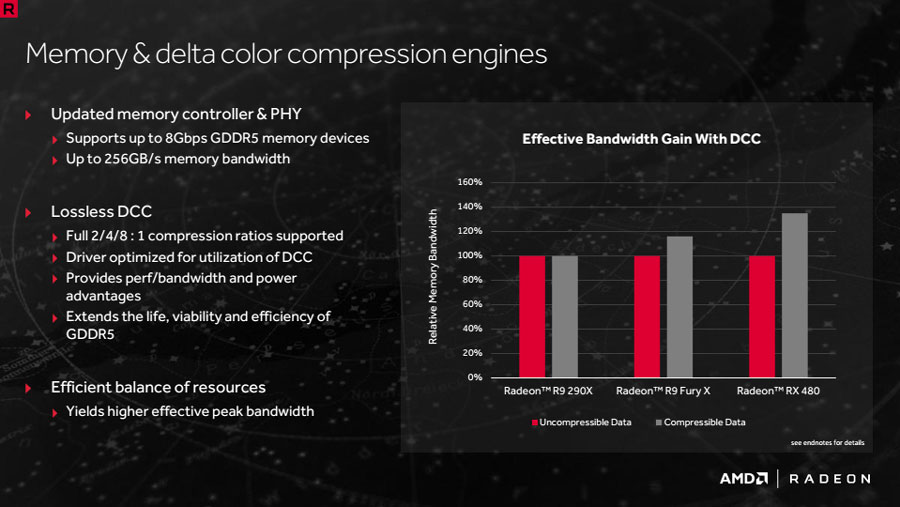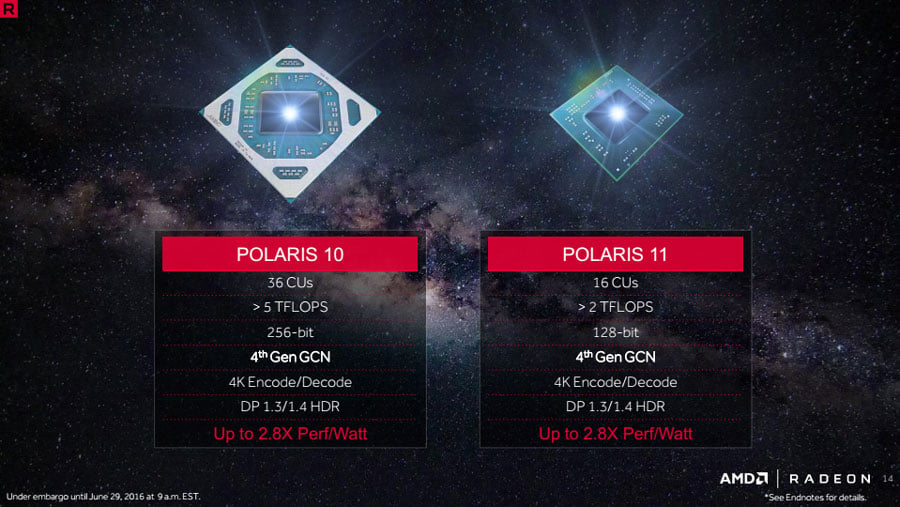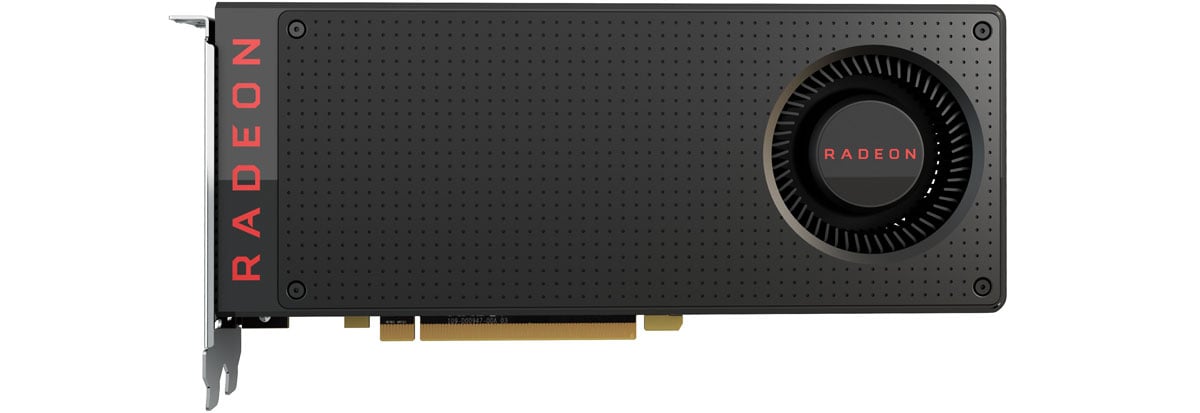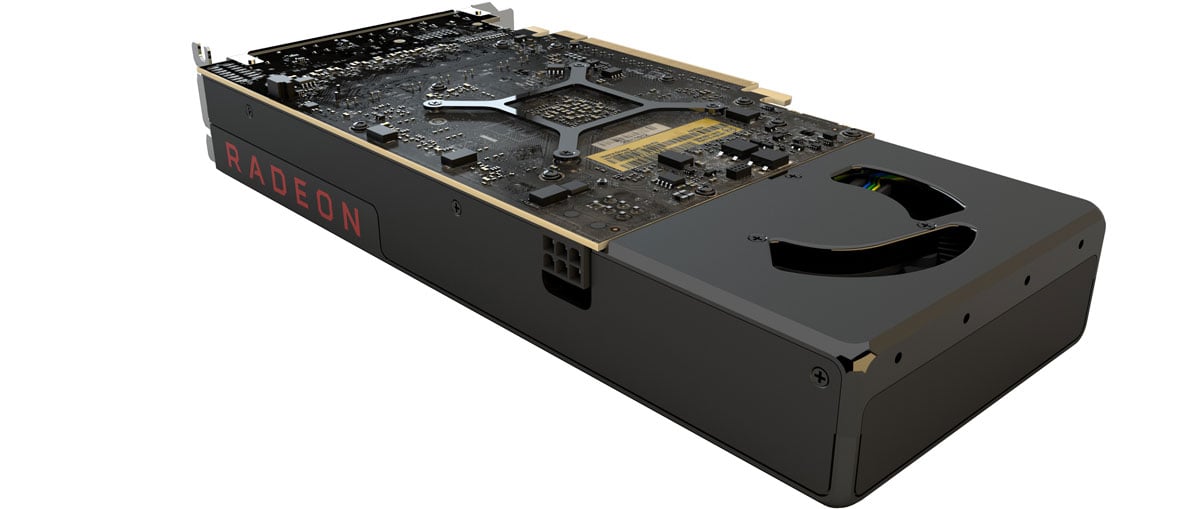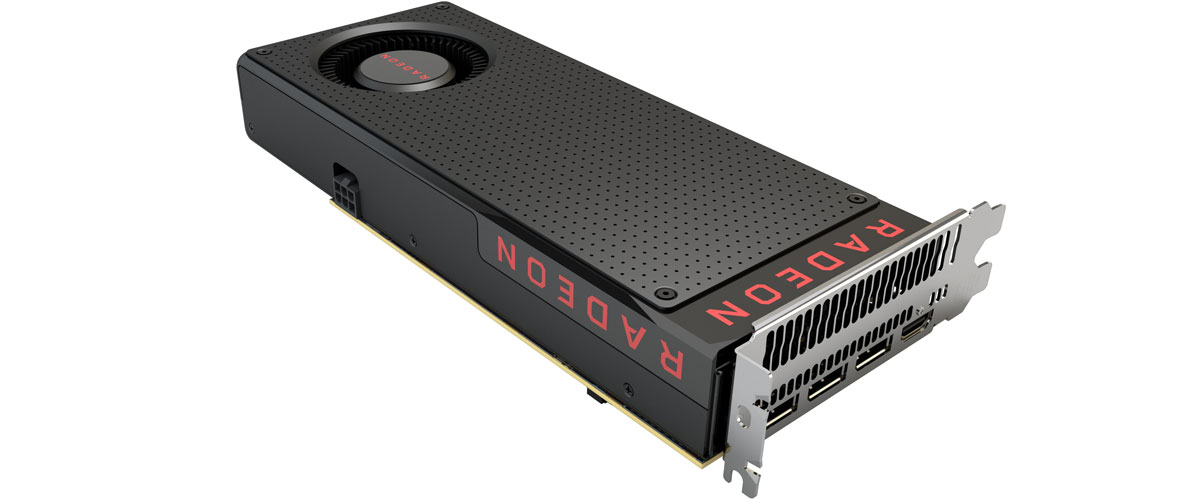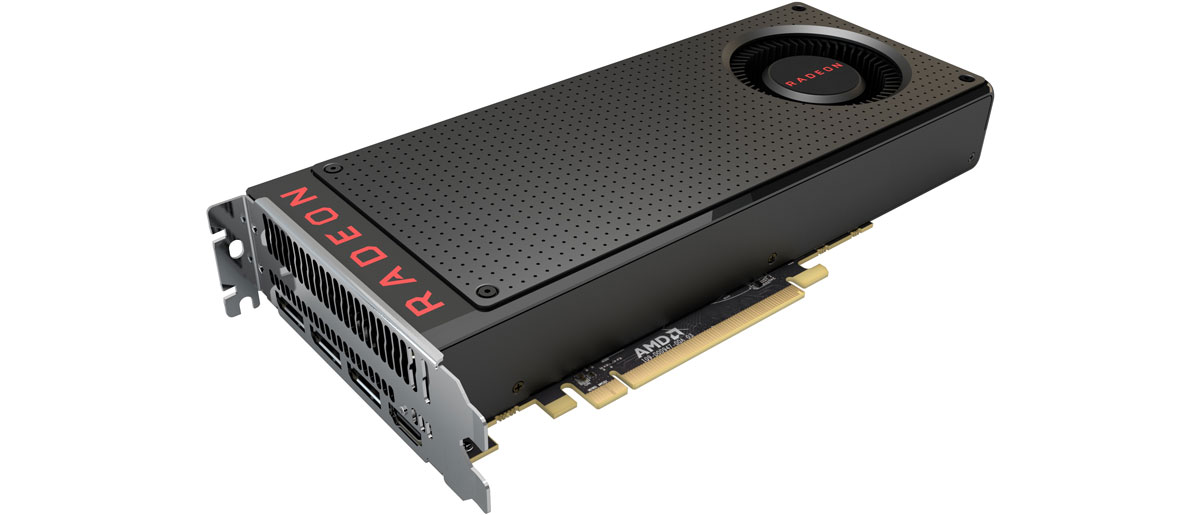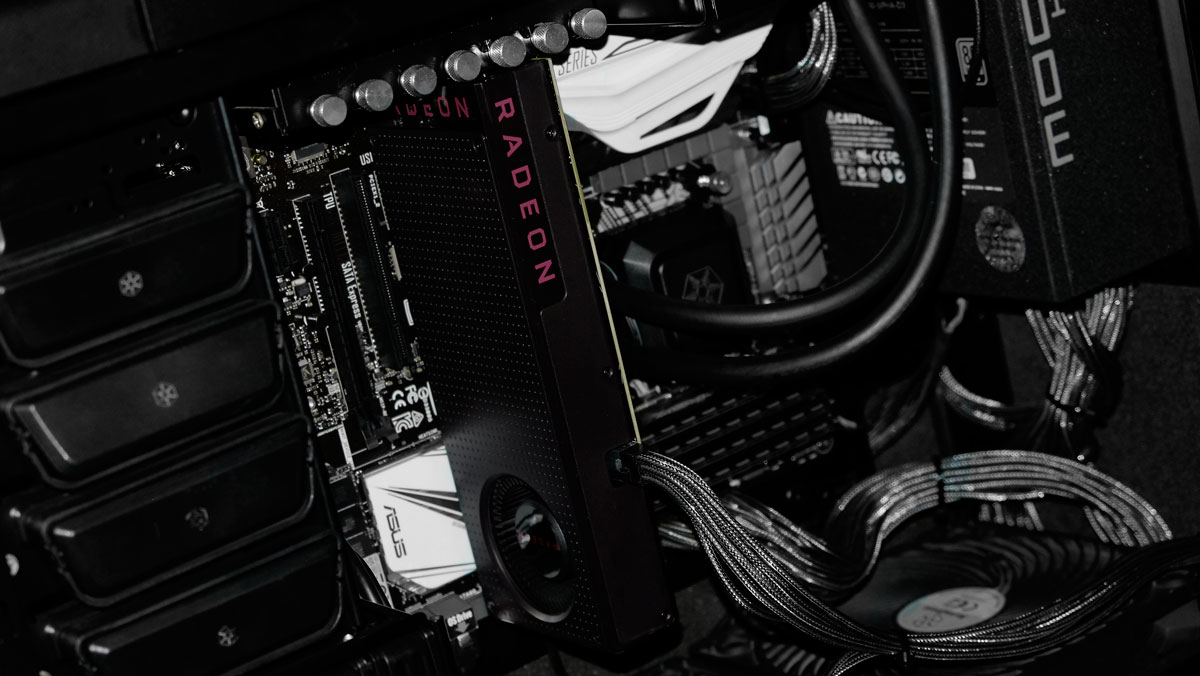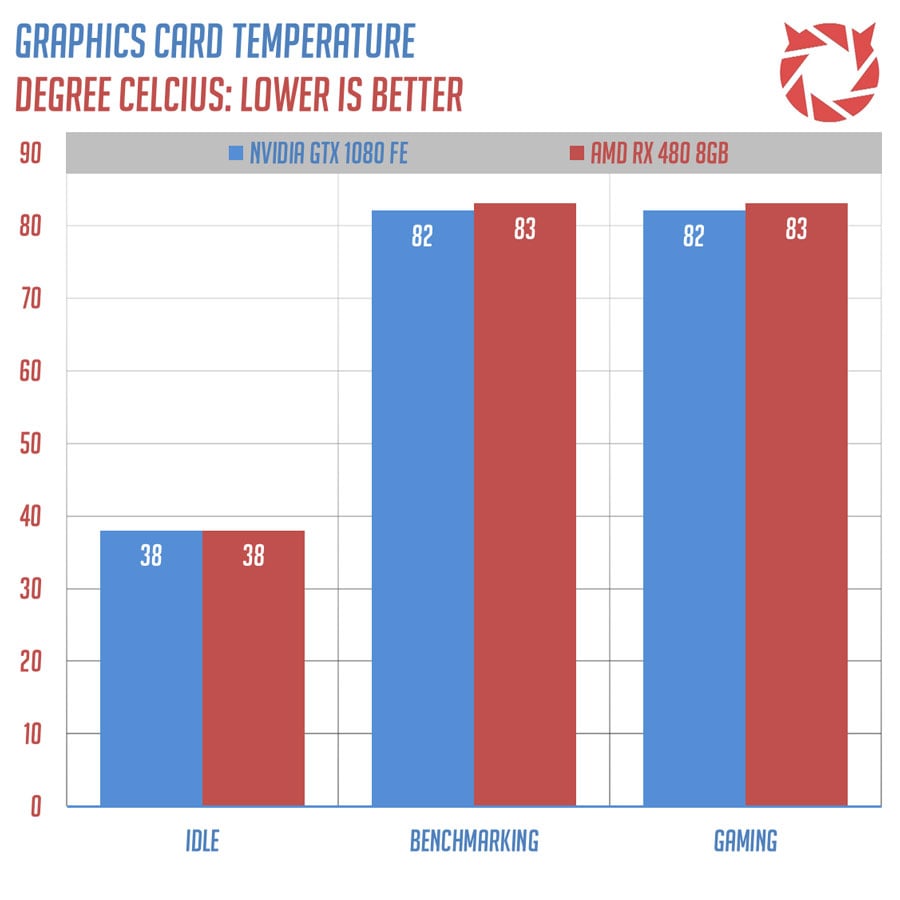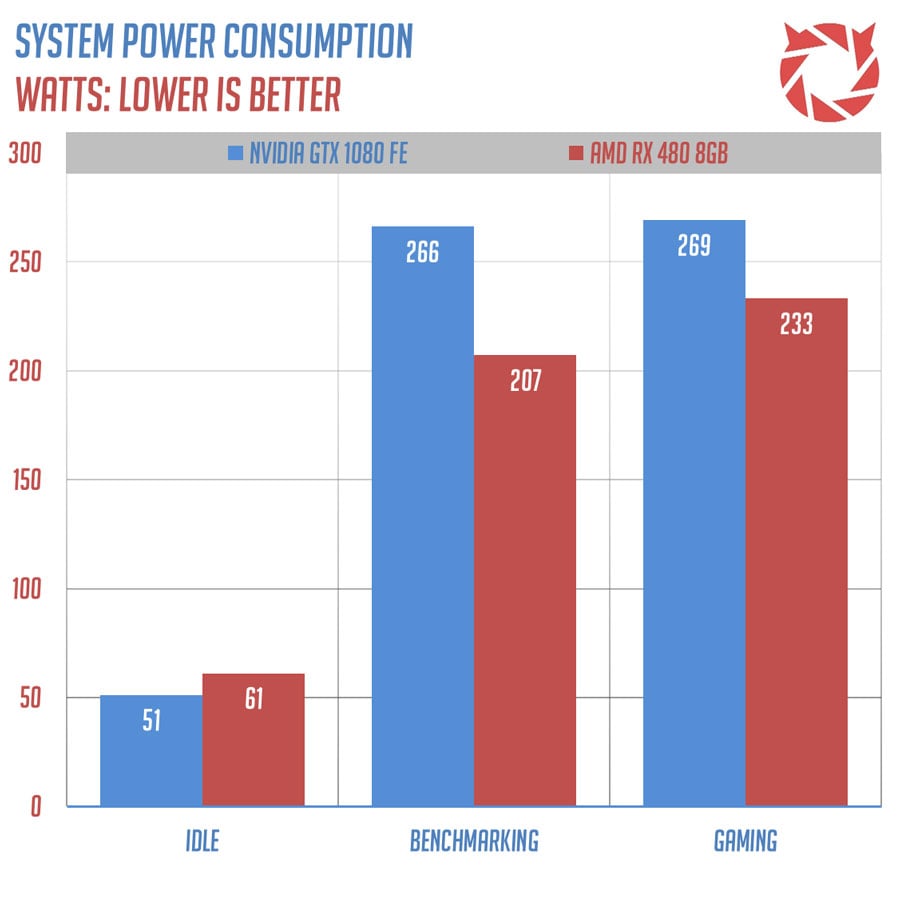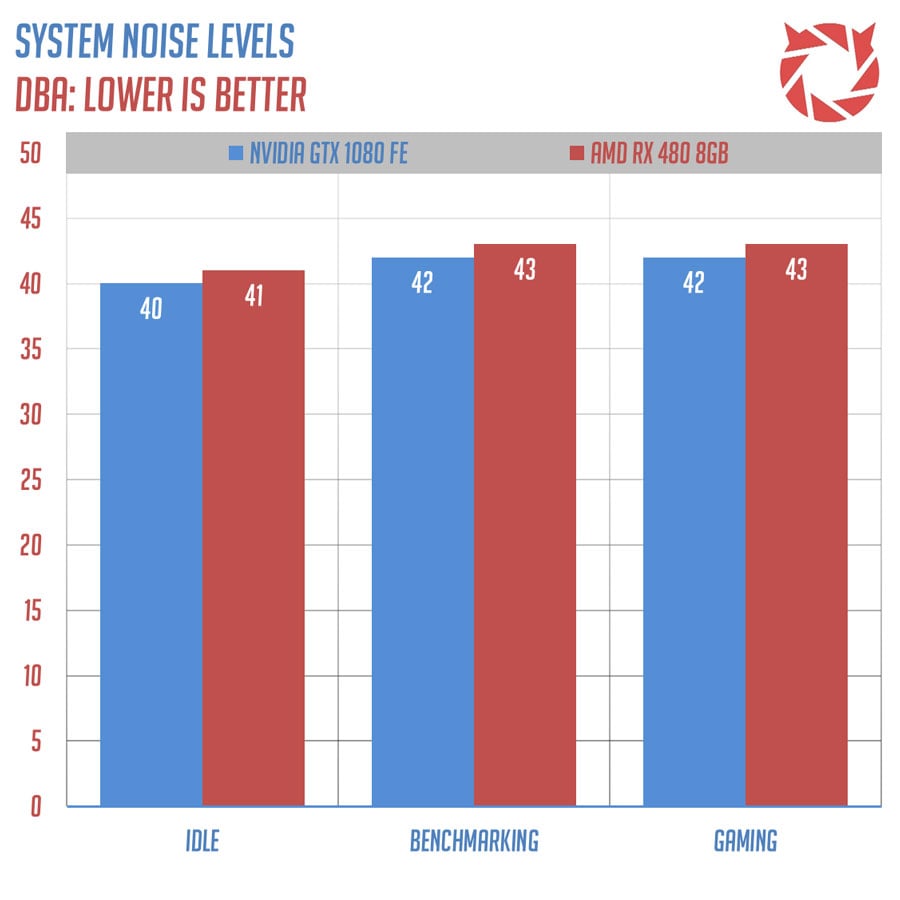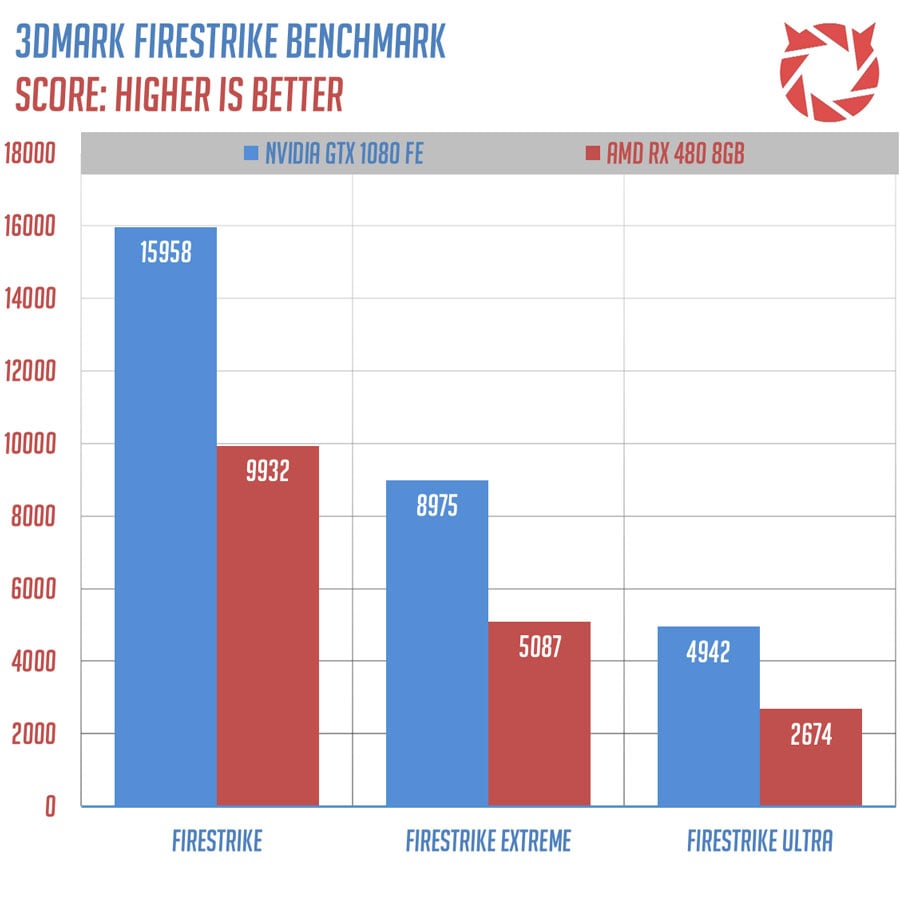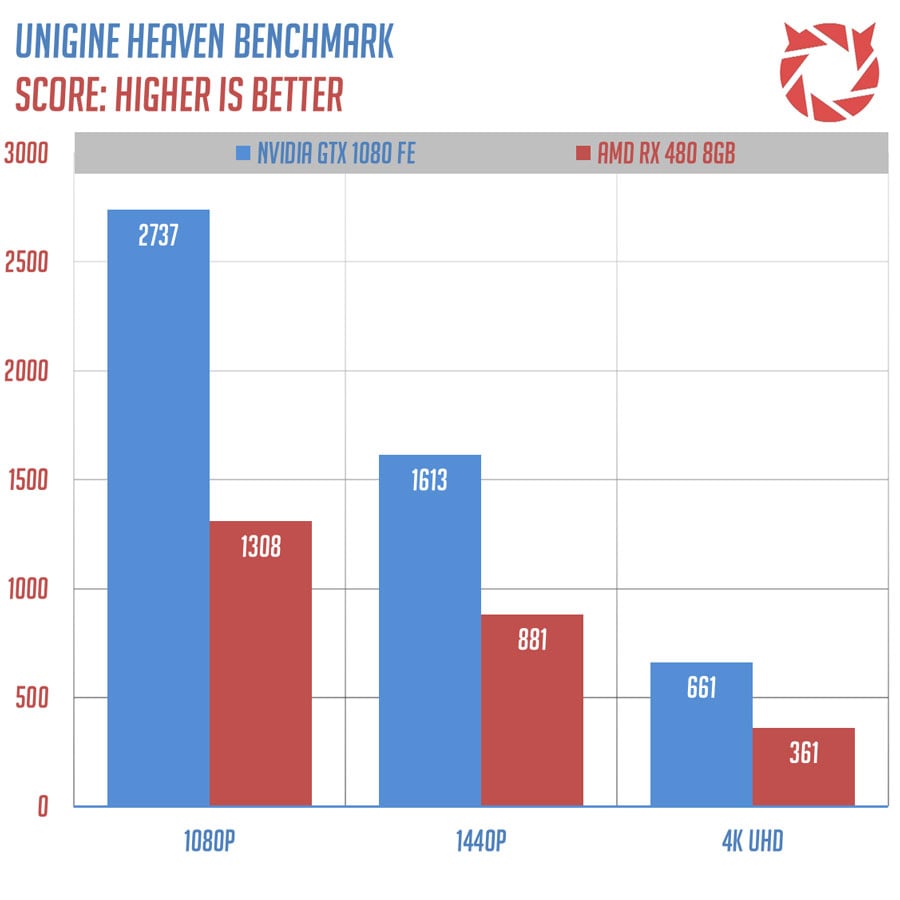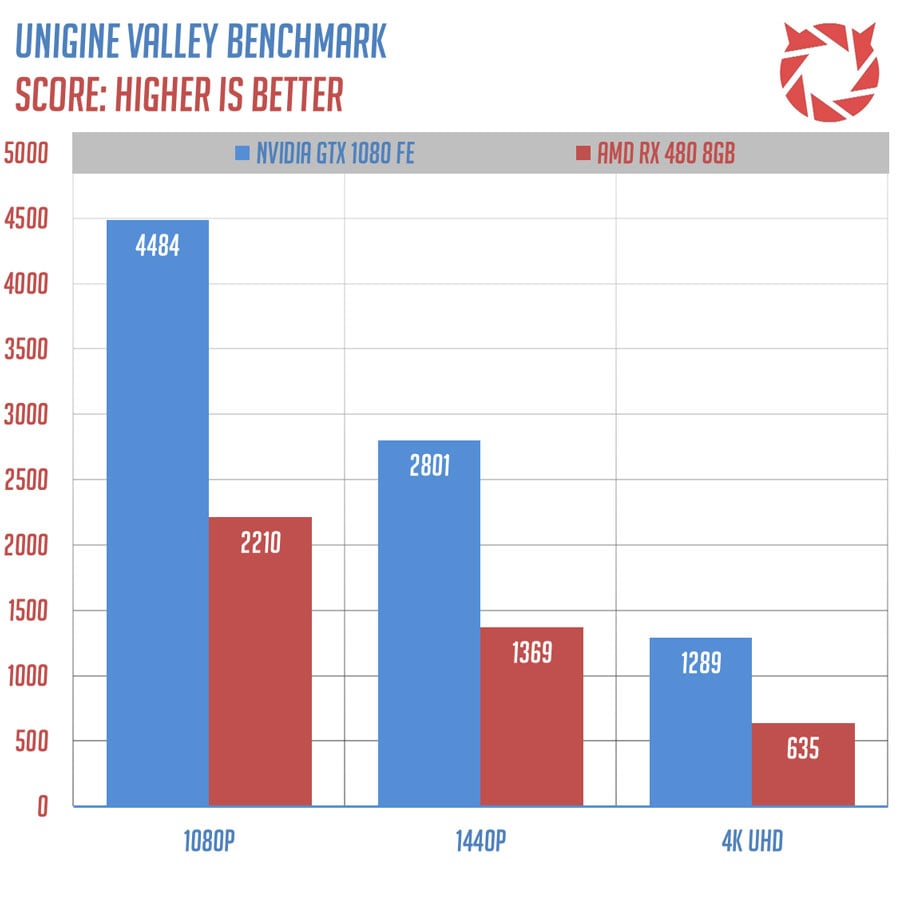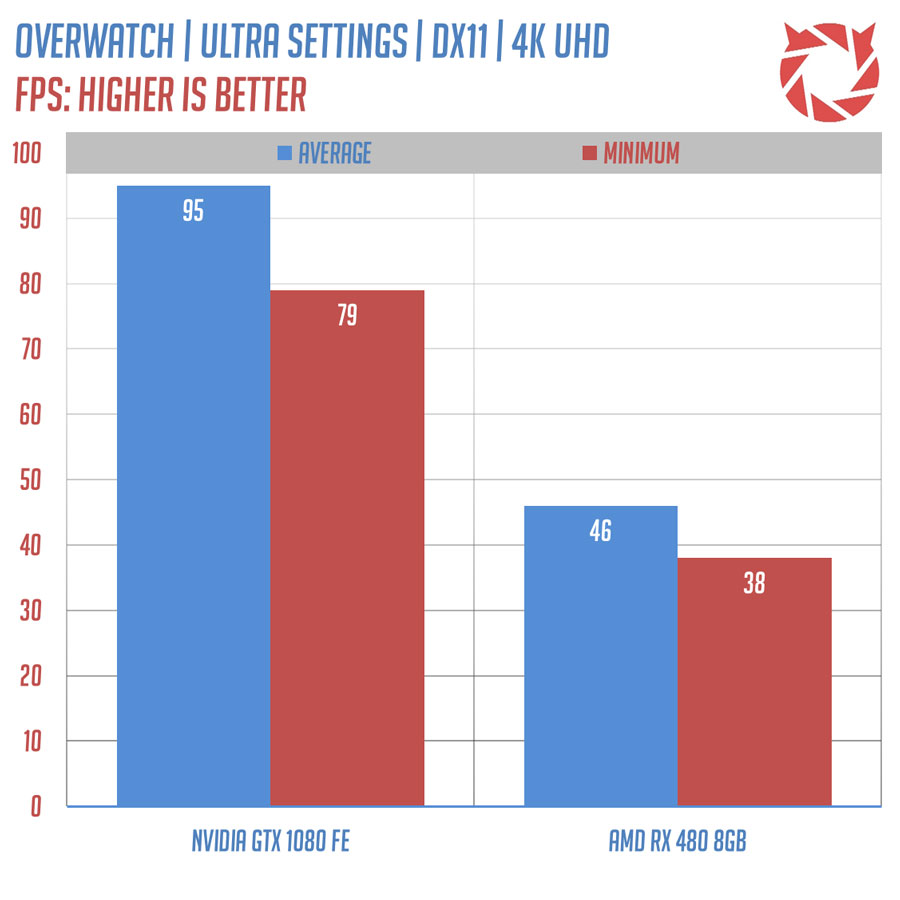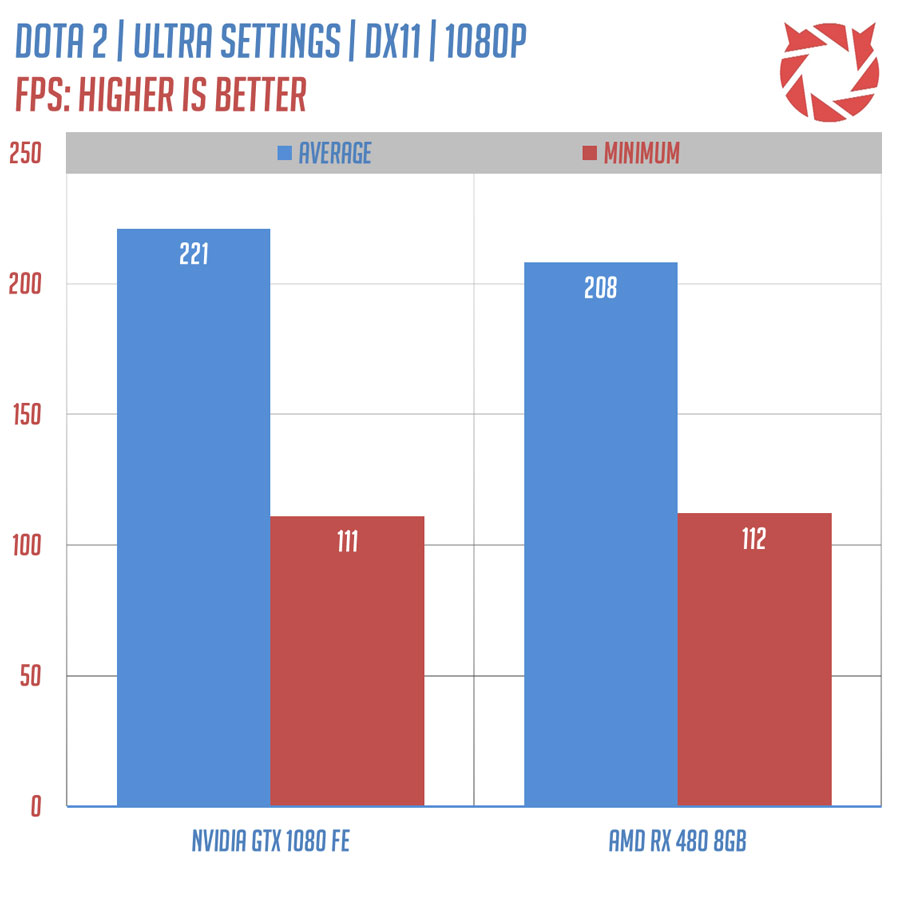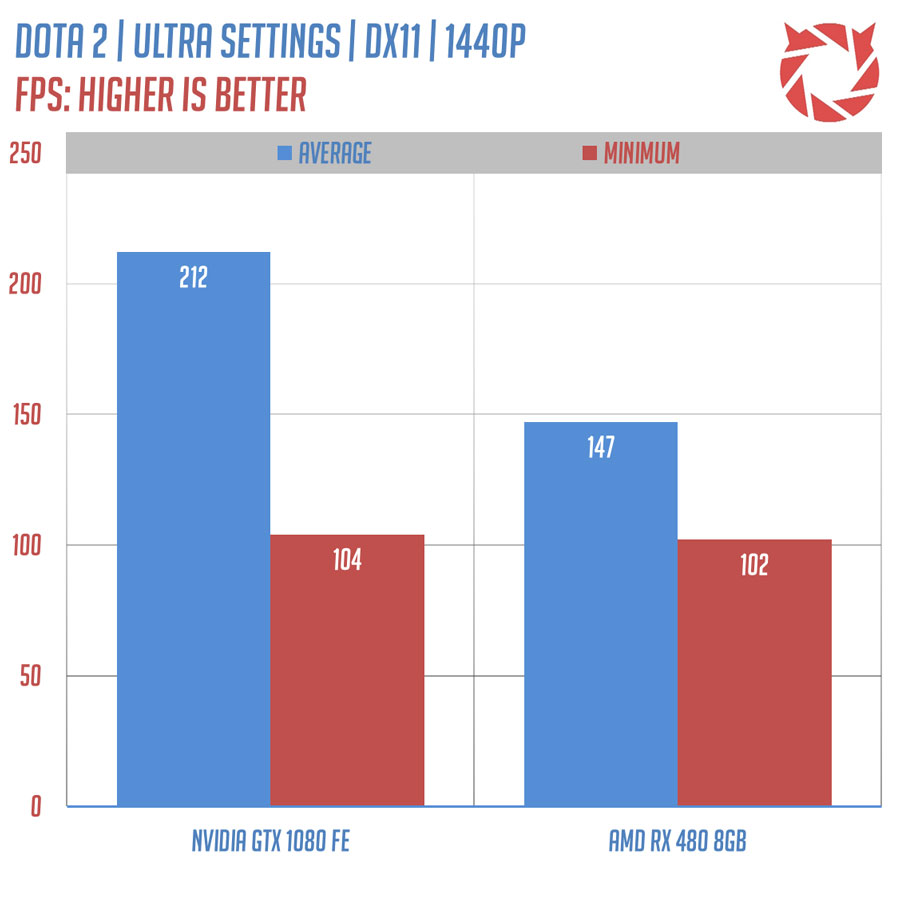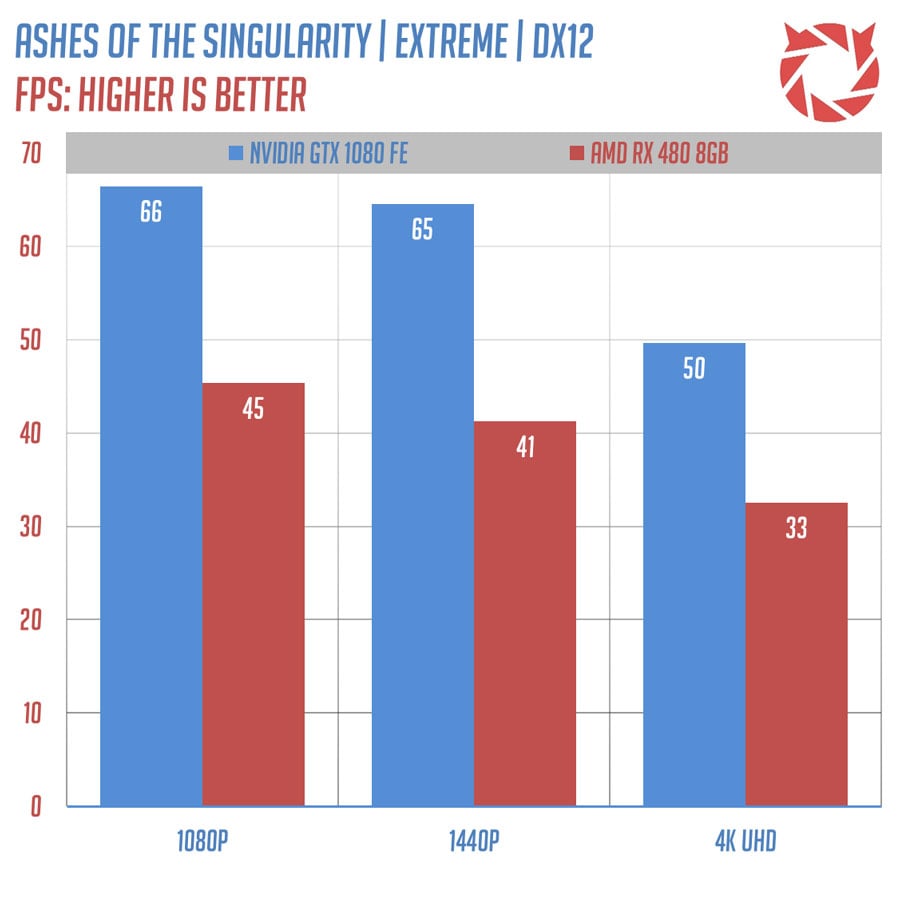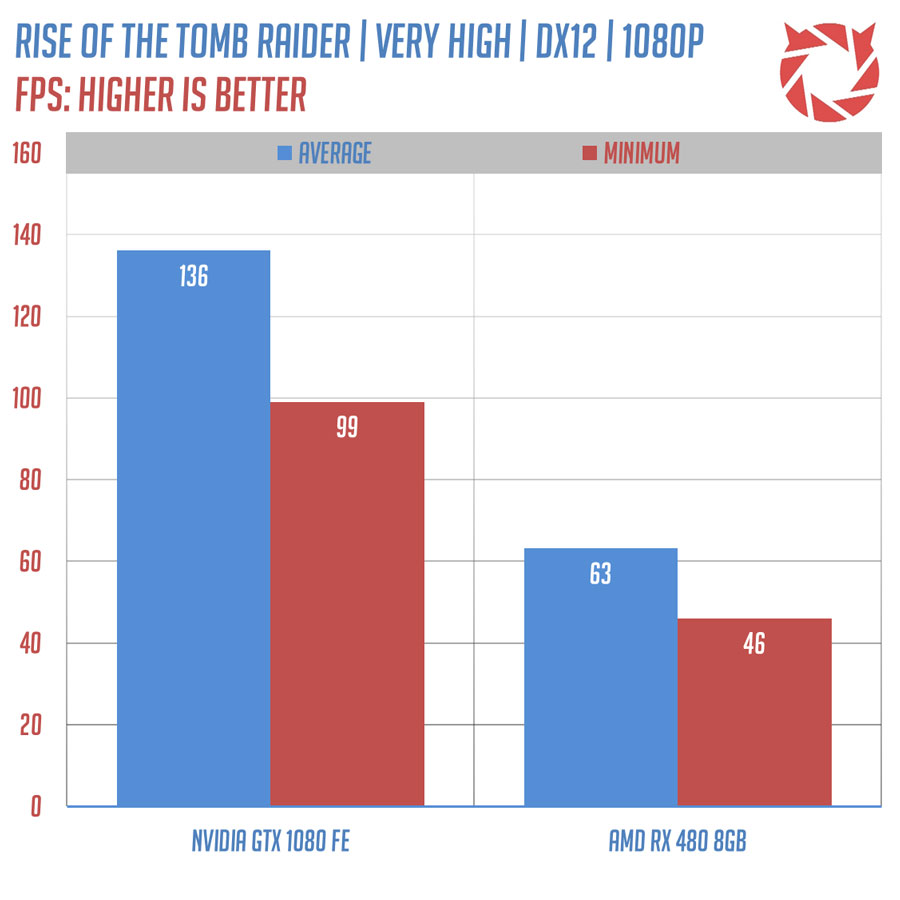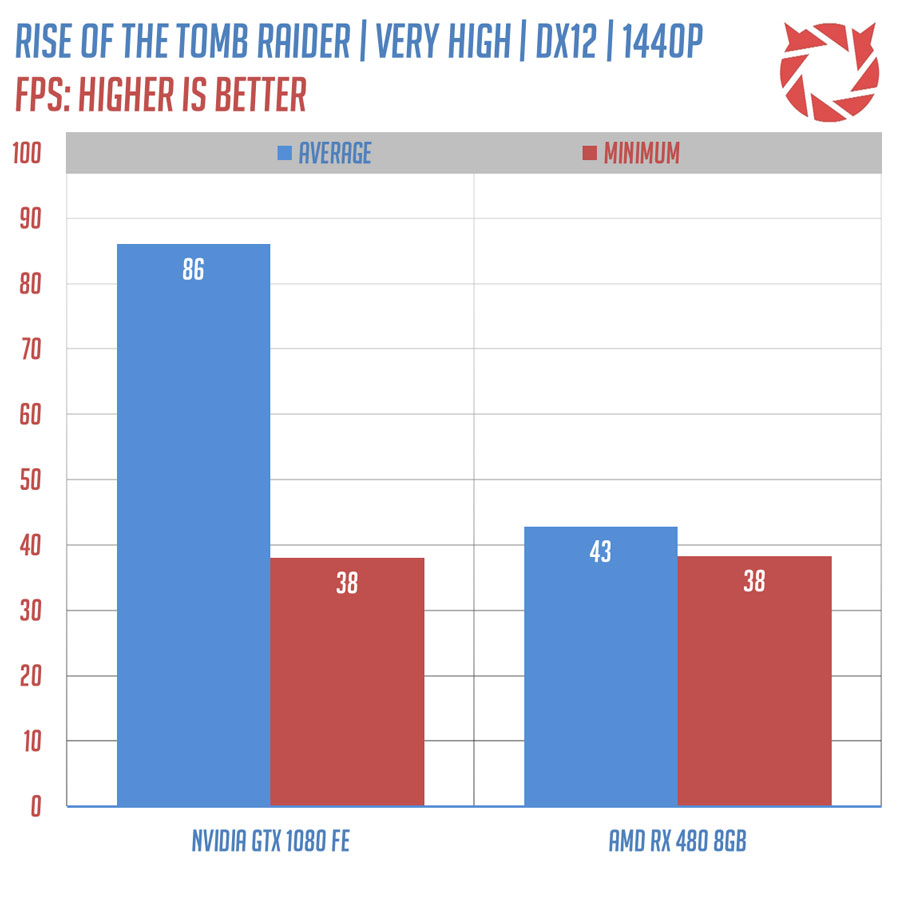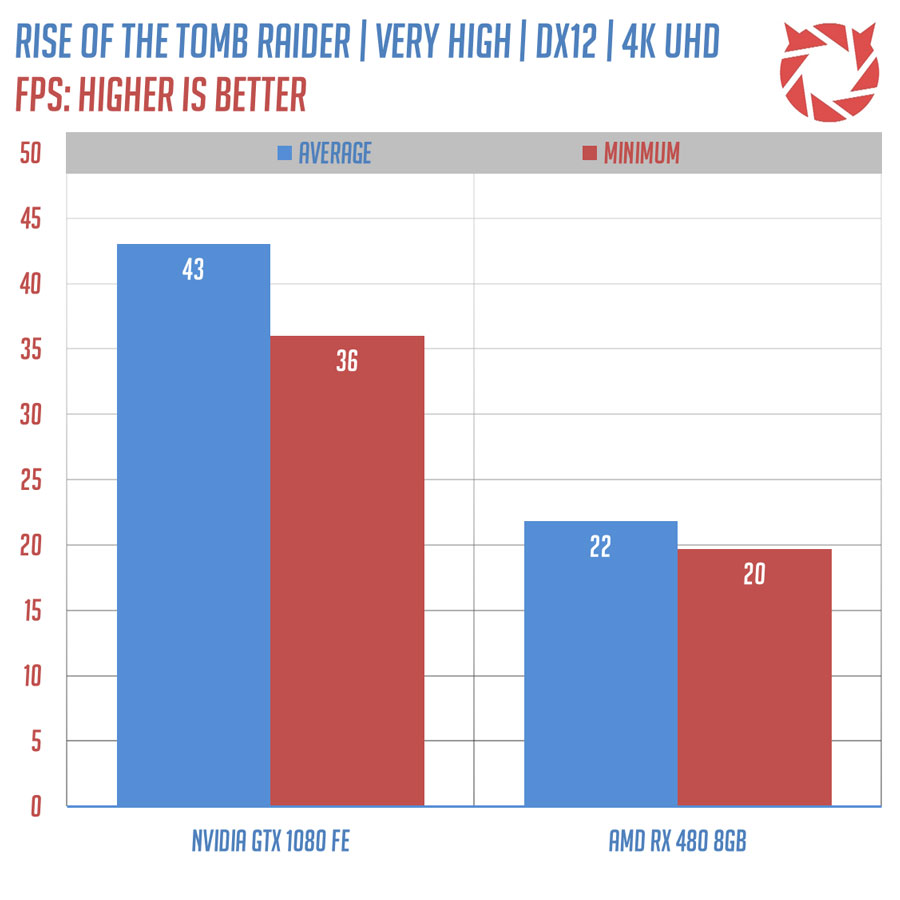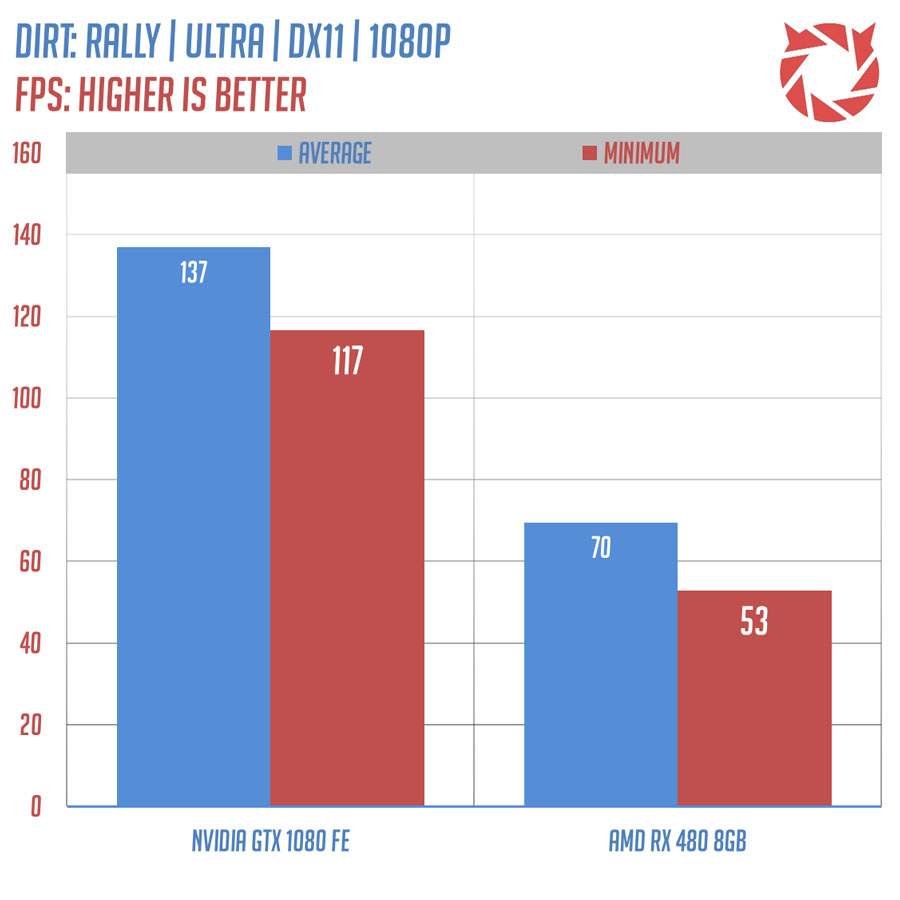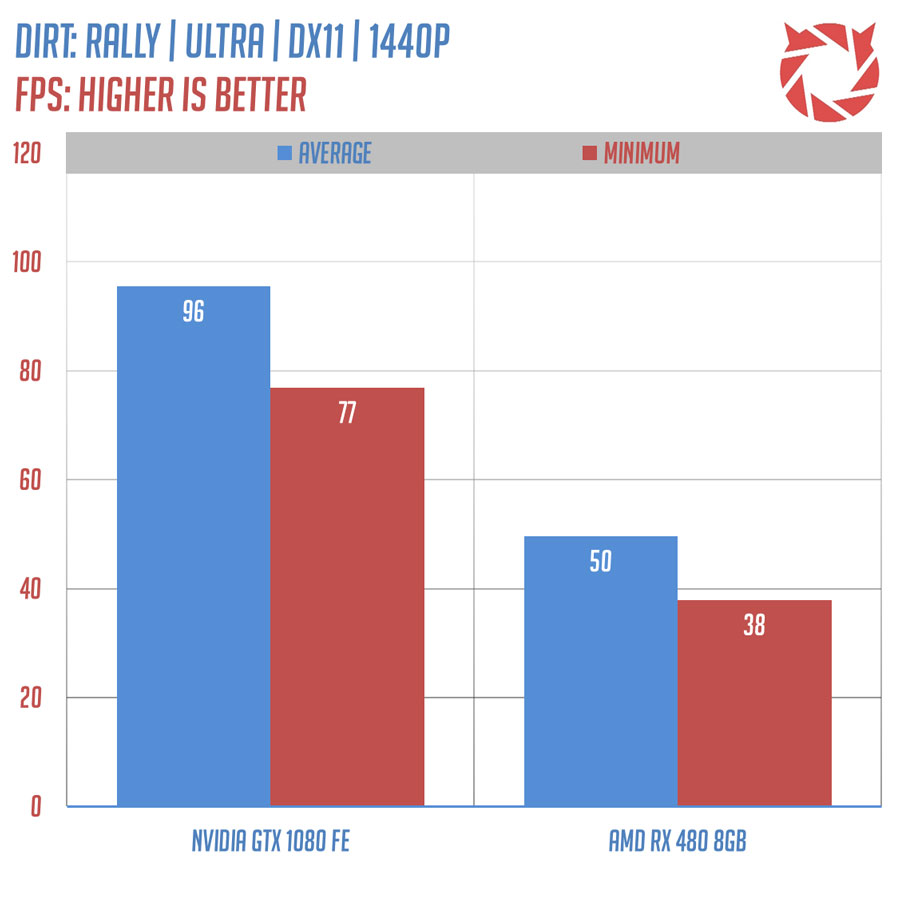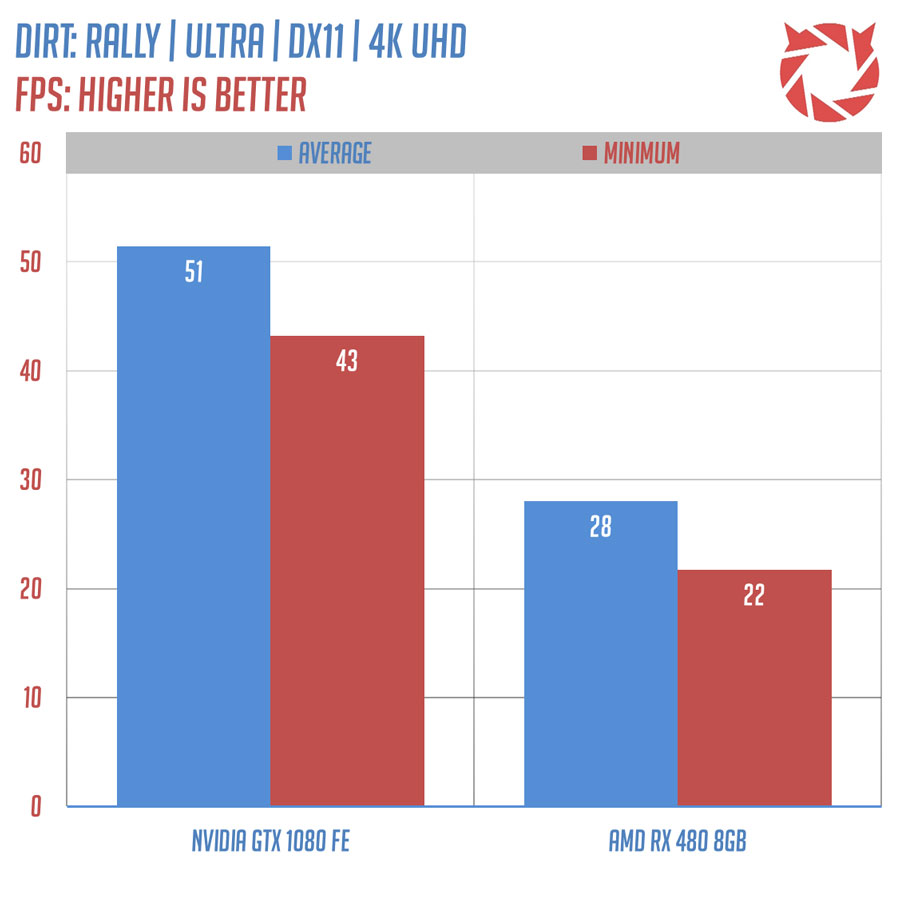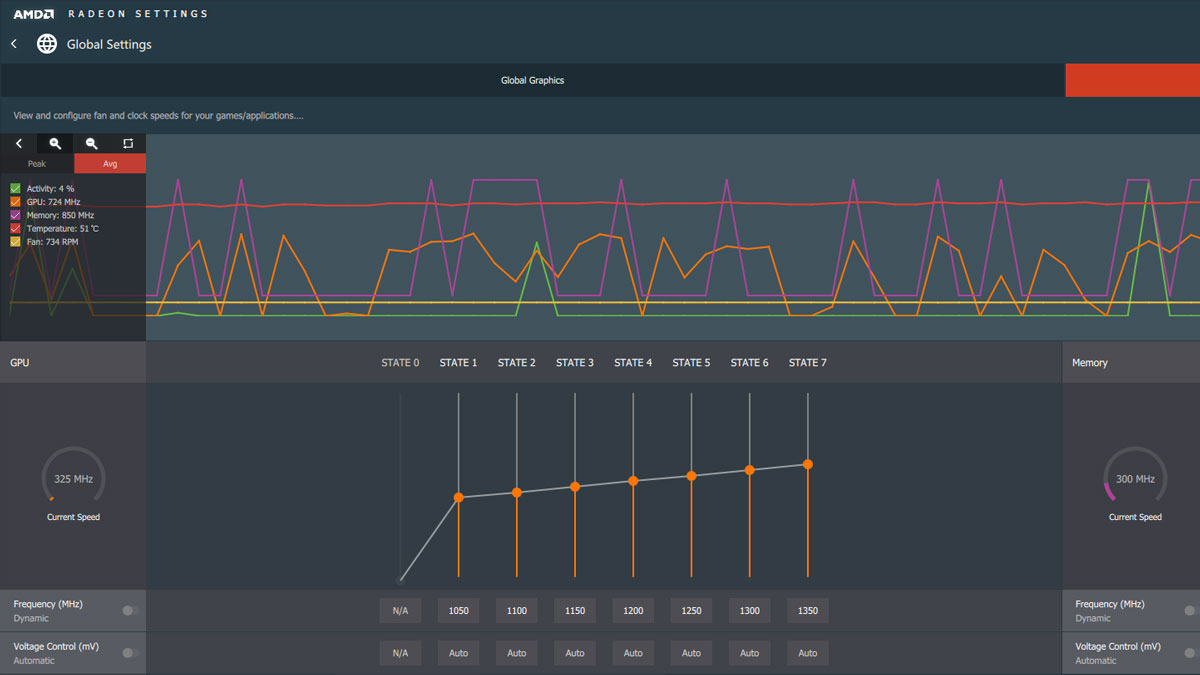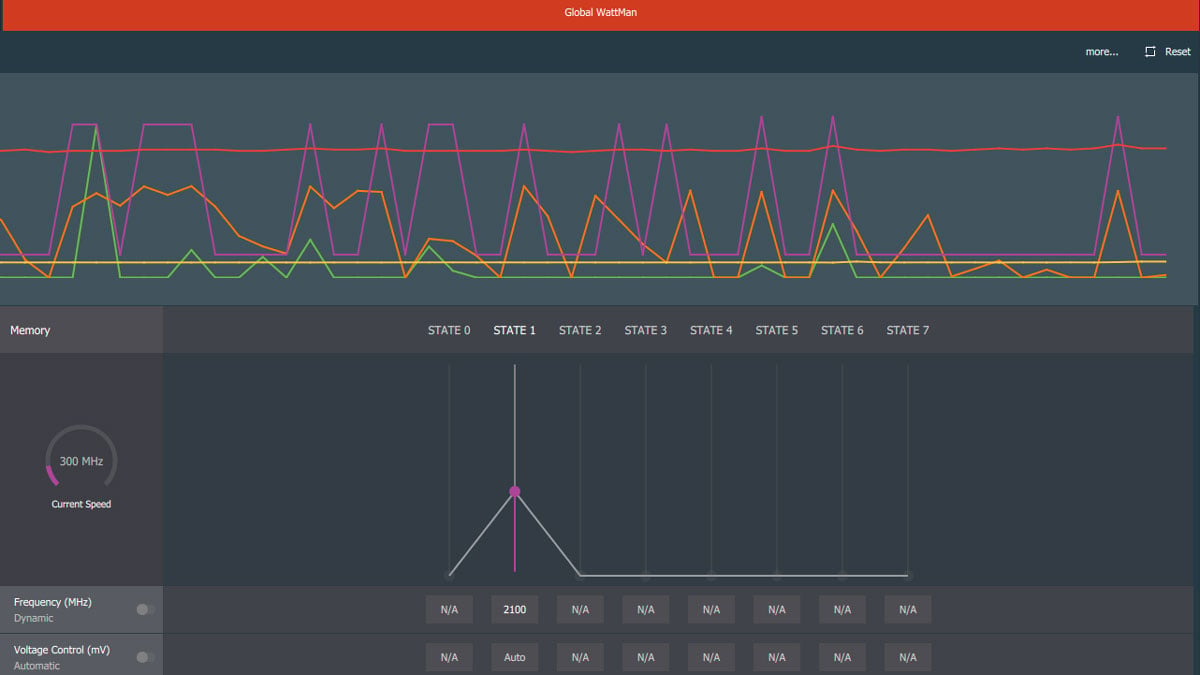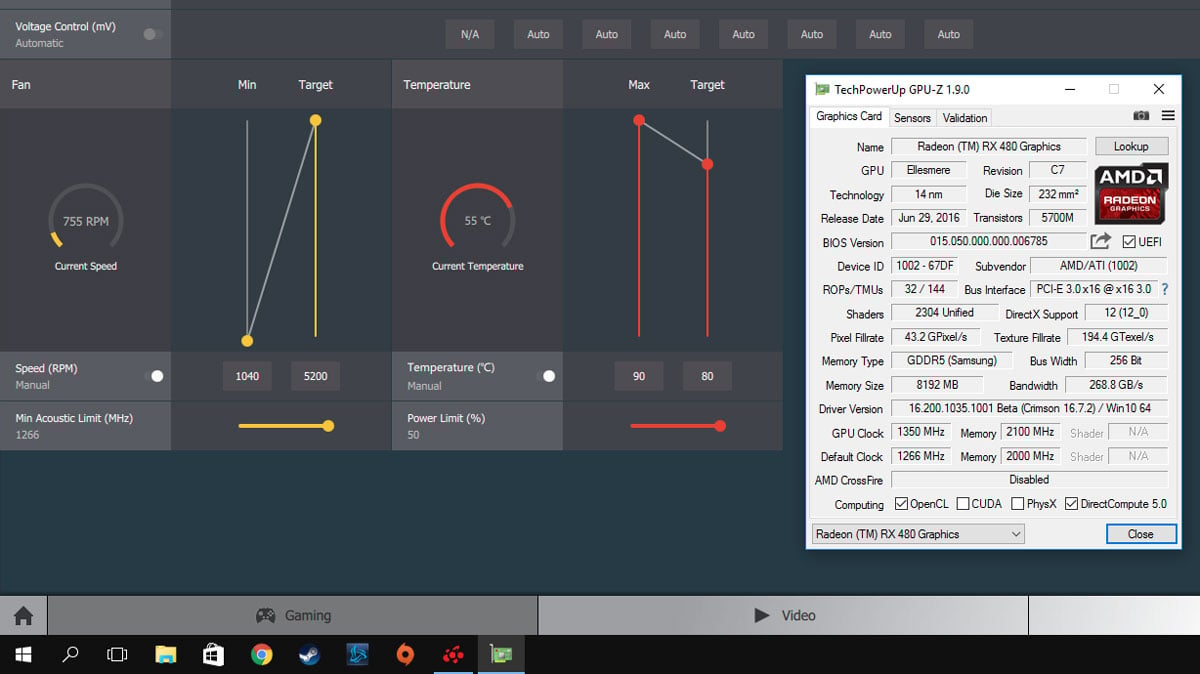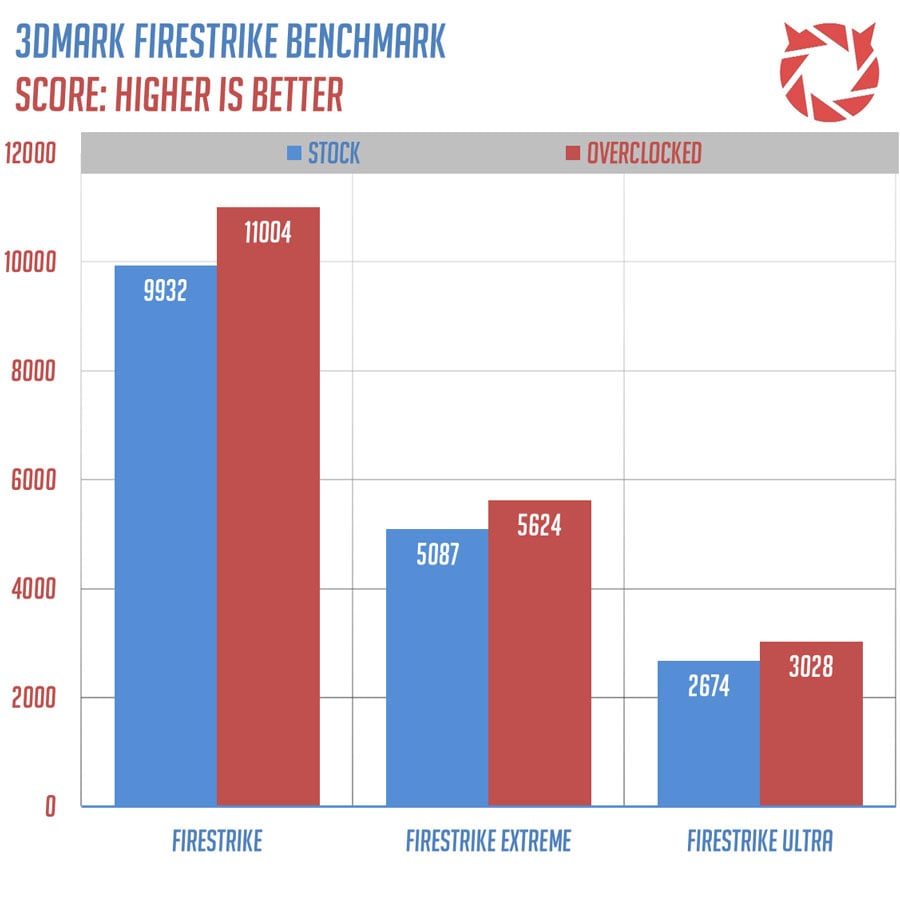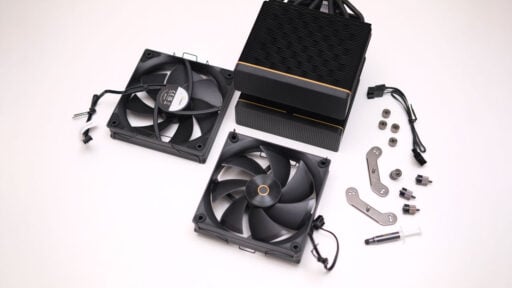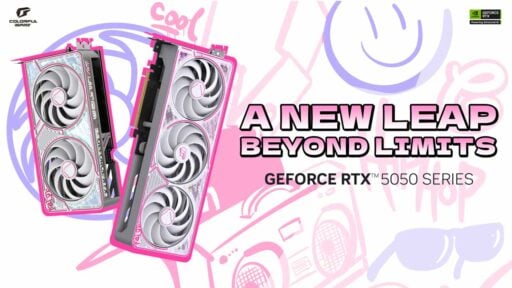The AMD RX 480 has been launched globally this June 29 featuring the 4th Generation GCN architecture code named Polaris 10. It is on a whole new level compared to the late 28nm AMD GPUs with a 14nm FinFET node featuring better thermals, performance, and power efficiency.
Aimed for VR gaming, the RX 480 puts itself to the mainstream category with the promise of bringing VR capabilities at a much lower starting point. The AMD RX 480 features Two official SKUs. A 4GB and an 8GB version. The first one features 7Gbps of GDDR5 memory, while the latter features 8Gbps of memory bandwidth. Both shares the same 256-bit bus width, with the same base and boost clock configurations at 1120 – 1266 MHz.
The TBP of the RX 480 is 150W regardless of memory count, providing a 1.9x performance per watt improvements over the R9 290. A chip which is undoubtedly hotter and consumes 275W of power. Finally, the RX 480 has 2304 stream processors, and 36 compute units equating a 5.8 TFLOPs of performance combined with the core clock and the memory configuration. The R9 390X has 6 TFLOPs of performance so we might see performance figures near that card’s level.
Table of Contents:
Polaris Architecture
Polaris is relatively new, but it brings so much to the table with performance, efficiency and full support for the latest and future gaming technologies. This includes Async Compute support that allows the GPU to handle complex task with efficiency. Therefore, decreasing latency and saving precious GPU resources. Along with it comes the Quick Response Queue that puts compute tasks at the top of the queue. Allowing compute heavy tasks to be set on higher priority. Those ACE units on the Polaris 10’s GPU diagram are responsible for the Async Compute functionality.
Of course low level APIs such as DirectX 12 and the Vulkan API are fully supported, allowing the developers to uncap the performance, efficiency, and capabilities of Radeon GPUs with extra headroom. The AMD Wattman has been introduced too. A new overclocking tool from AMD built right into the Radeon Crimson Software Suite.
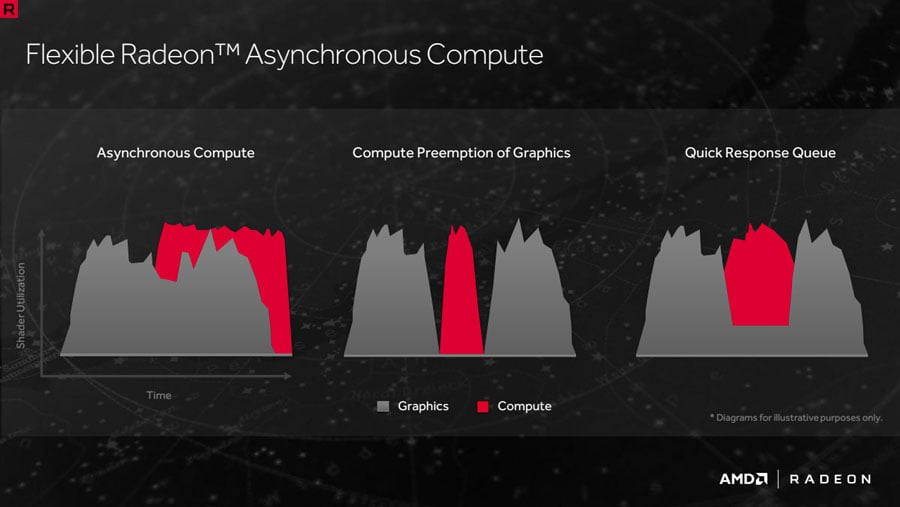
The Polaris architecture features new geometry engine enhancements including the Primitive Discard Accelerator. This effectively culls unnecessary geometry from the graphics pipeline. Allowing the graphics card to disregard any unnecessary stuffs from the pipeline. Only drawing the ones that will be displayed on screen.
Memory and Delta Color Compression are also improved, with an updated memory controller supporting a maximum of 8Gbps. Along with it comes the Lossless Delta Color Compression which should provide performance per bandwidth and power improvements.
The AMD RX 480 falls under the Polaris 10 architecture, with Polaris 11 geared towards a more budget conscious audience. It is releasing soon with the RX 470 and the RX 460 featuring the said smaller Polaris part.
Design
The AMD Radeon RX 480 features a styling similar to the Radeon Fury cards with a simple yet industrial rectangular cooler. It’s not as fancy as the Founders Edition cards but it is nonetheless a proper looking reference card. It looks way more professional compared to the R9 200 series and I welcome this simpler approach with enthusiasm.
The card is just around 9.5 inches long, with a width of 4.5 inches. Without the cooler, the actual size of the card is just around 7 inches so there’s plenty of space to cram up a 7 inch cooler for a more compact version. AMD’s AIB partners might release one or two ITX models for compact systems.
The cooler isn’t fancy, but AMD suggested that it is way quieter than the NVTTM based GTX 970 cooler at lower RPMs. Now as for the power, AMD decided to go with a single 6-pin power connector. This puts a configuration of 75W from the PCI-E, and another 75W from the auxiliary for a total of 150W.
Connectivity is provided by three DisplayPort 1.4 outputs and a single HDMI 2.0 port. DVI has been left out of the equation but AIB partners are free to add it themselves. I like this simpler approach from AMD’s part, since there is a full slot of free space for the ventilation.
This card directly came from AMD, so the lack of unboxing or a look at its accessories are given. Rest assured, VGA vendors such as XFX and Sapphire should include an auxiliary power connector, a driver disk and a few paper works.
Test Setup
Graphics cards are not total strangers in our labs, but providing a precise result usually needs a lot of time and effort on our end. Helping us to do those things are hardware and software based measurement tools, and a wide selection of popular games plus benchmarks.
Good ASIC Quality means a better overclocking potential.
Third party background softwares are disabled while the benchmarks are on going unless required. Gaming benchmarks should include 720p, 1080p, 1440p, and 2160p if permitted or if necessary to the hardware being tested. The OS of choice is a 64-bit Windows 10 Pro with power options set to balanced.
| TEST SYSTEM SPECIFICATIONS | |
| CPU | INTEL CORE I5 6600K |
| MOTHERBOARD | ASUS Z170-A |
| CPU COOLER | SILVERSTONE TD03-LITE |
| MEMORY | CRUCIAL BALLISTIX TACTICAL 16GB 2666MHZ |
| GRAPHICS CARD | AMD RADEON RX 480 8GB |
| INT. STORAGE | KINGSTON HYPERX FURY SSD 240GB |
| PSU | COOLER MASTER SPH 1300W |
| DISPLAY | 27″ DELL U2715H WQHD IPS PANEL |
| OS | MICROSOFT WINDOWS 10 PRO |
Temperature
The Unigine Heaven is an intensive GPU benchmark that measures the performance of the graphics card, and it doubles up as a stress testing tool with heavy usage of tessellation. Unigine Heaven, along with Overwatch will run for approximately 15 minutes. Temperature values will be taken directly from GPU-Z, and will be cross referenced from other temperature logging tools. Ambient room temperature is at 27 Degree Celsius.
Power
We also have to check how the GPU impacts power consumption using Unigine Heaven, and Overwatch. The game and benchmark will run for approximately 15 minutes. Power readings are taken from the entire test system using a watt meter during the most intensive scenes.
Noise
A sound level meter 2 feet away from the chassis is used to record the sound level of the whole test system while gaming and running a benchmark. The room has an ambient noise level at around 37 dBA which is perfect to test the acoustic performance of any system or a graphics card’s cooling solution.
Synthetic
3DMark 2013 is a suite of benchmarks catered for the gamers and enthusiasts. It features the FireStrike, FireStrike Extreme, and FireStirke Ultra benchmark presets which are suitable for wide range of systems. The total system scores from each presets will be used.
Unigine Heaven is a stress test and a benchmark tool built specifically for the graphics card. We will run a full test to see how the graphics card performs under such benchmark. The total system score will be used for comparison.
Unigine Valley is a stress test and a benchmark tool built specifically for graphics cards, similar to the Heaven benchmark. We will run a full test to see how the graphics card performs under such benchmark. The total system score will be used for comparison.
Gaming
Overwatch is Blizzard Entertainment’s critically acclaimed FPS shooter, running on a custom game engine developed by Blizzard utilizing the DirectX 11 API. Benchmarks will be taken from a custom game on a map called Temple of Anubis. The graphic settings is set to ultra with a 100% render scale.
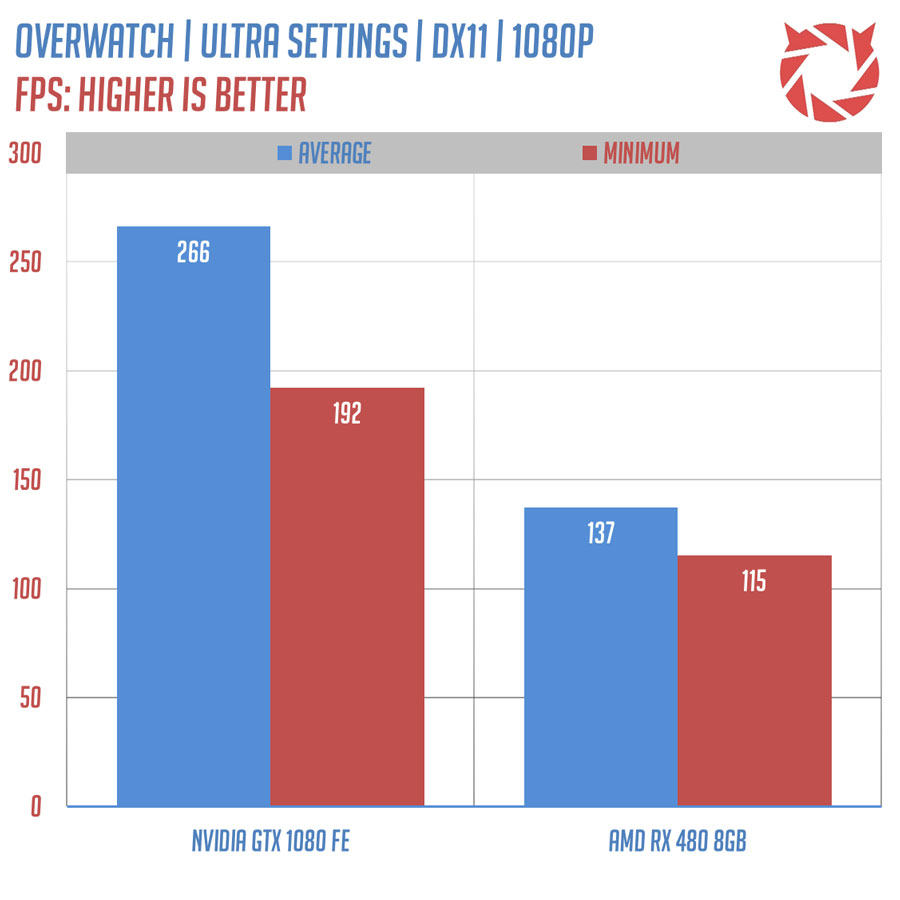
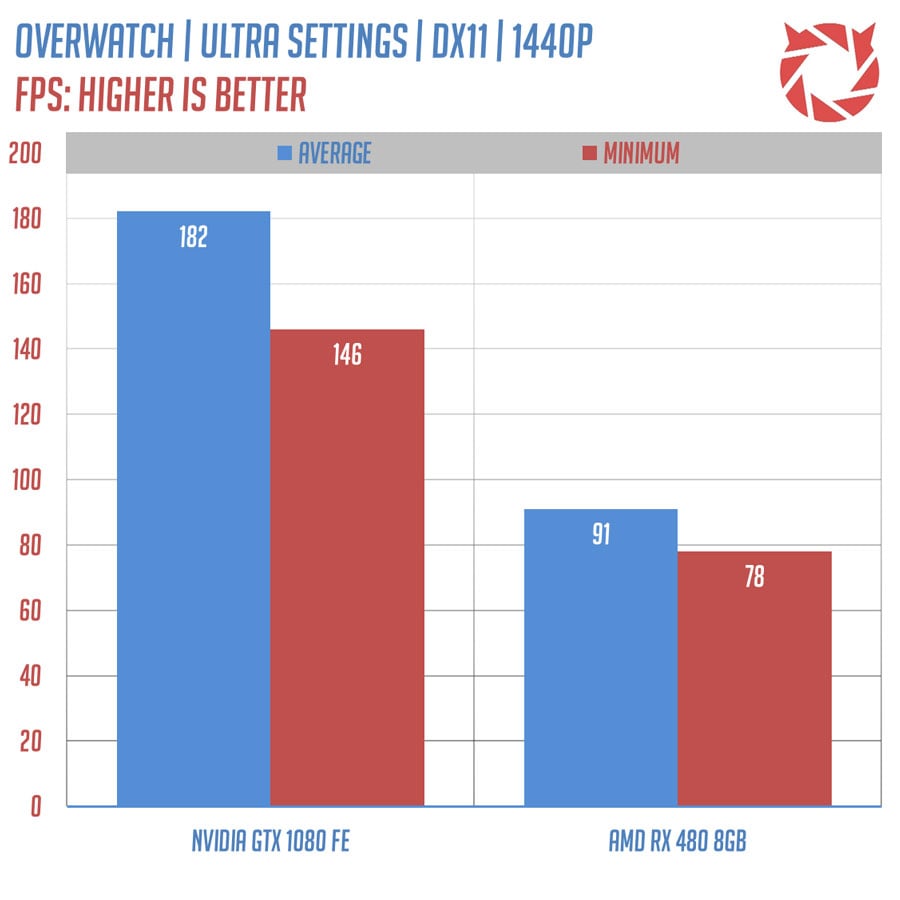
DOTA 2 is Valve’s popular MOBA game, running on their own Source Engine 2. Benchmarks are taken from a match replay between Alliance and Natus Vincere. The graphic settings is set to ultra. The frame rate is uncapped, and v-sync is turned off.
Ashes of The Singularity is an RTS game developed by Stardock and one of the first games to support the DirectX 12 API. Benchmarks will be taken directly from the game’s benchmarking tool, with the graphic settings is set to extreme.
Rise of the Tomb Raider is the direct sequel to 2013’s Tomb Raider reboot. It is developed by Crystal Dynamics and Eidos Montreal, with support for the DirectX 12 API. Settings are set to Very High, with SMAA, HBAO+, and Pure Hair enabled. Benchmarks were taken from the Syria level.
DIRT: Rally is Codemaster’s proper take on the rally racing game genre, with support for the DirectX 11 API. Settings are set to Ultra, with 8x SMAA enabled. Benchmarks were taken from the stages at Hafren, Wales.
Overclocking
The AMD Wattman is built within the Radeon Crimson Software Suite, and is introduced with the RX 480. It is a nifty and easy to use overclocking tool that works really well based on our experience. It can be enabled via the global settings tab found within the software suite.
The Wattman is not just your ordinary tool. You can use it to analyze GPU behavior including its temperature and the fan RPM via a colorful histogram. With the Wattman, overclocking both the core clock and the memory now depends on two major settings. One is dynamic which is overclocking based on the GPU states, offering a finer tuning approach for the end user. Manual on the other hand speaks for itself.
We managed to get a healthy 1350 MHz core clock and a 2100 MHz memory clock during our playtime with the RX 480. Voltage control has been set to automatic but it’s all safe and sound at 1.15v. The fan is set to run at the maximum to ensure that we wont hit thermal throttling.
A 7% and 5% increase for both the core and memory clock gave us a 10% to 13% gains at 3DMark. This enables us to see what the future non reference cards will offer in terms of performance should they feature the same configuration.
Conclusion
The AMD Radeon RX 480 promises VR gaming at introducing an entry level price point for those who wants to experience VR without breaking the bank. This has been proven true with a performance right up at the alley of the higher end graphics cards of the yesteryear. It is no way near the GTX 1080’s level when it comes to performance but it is safe to say for about half the price, it is something that’s nothing to laugh at.
Gaming at 1080P is no concern, with 1440P being a more realistic target for this card allowing its massive 8GB VRAM to work its magic. That figure wont be fully utilized by most games with 4GB to 6GB of VRAM being the modest and more conservative approaches. But, it is a good measure for games that will or requires more than 6GB of VRAM. Games with higher quality textures, heavy post processing, and heavy anti-aliasing modes will definitely see gains. Otherwise, you are better off with the 4GB version.
Power figures were good, with our system consuming a maximum of 233W while gaming. That’s 36W less than the GTX 1080 so we’re all good on this department. Acoustics weren’t bad too, as we hear no issue with the fan at normal load spinning at 735 RPM to 2219 RPM. At full load it features a 58 dBA sound level which is noisy and is just useful for keeping the card cool while benchmarking or overclocking. I must say I cannot wait for a better cooling solution from AMD’s AIB Partners.
Now this is where it gets tricky. The pricing. Internationally, the card has a respectable 199 USD to 239 USD MSRP. That should be around 9, 500 to 11, 500 PHP. Problem is, the lowest retail price we could see here locally is around 13, 800 PHP. Converted, that is around 290 USD which is breaking this card’s target market. Granted, the card is deemed a little less valuable locally, but we gotta give AMD the credits for creating a card with purpose to provide VR ready performance under 250 USD. We really like to give it our value award but as long as its price remains stiff on this side of the globe, our performance award will do for the meantime.
AMD Radeon RX 480
Summary
The AMD Radeon RX 480 is available in 4GB and 8GB models, featuring a $199 and $239 price point. This card is VR capable and is one of the best value oriented graphics card in the market to date with the exception of the local pricing.

